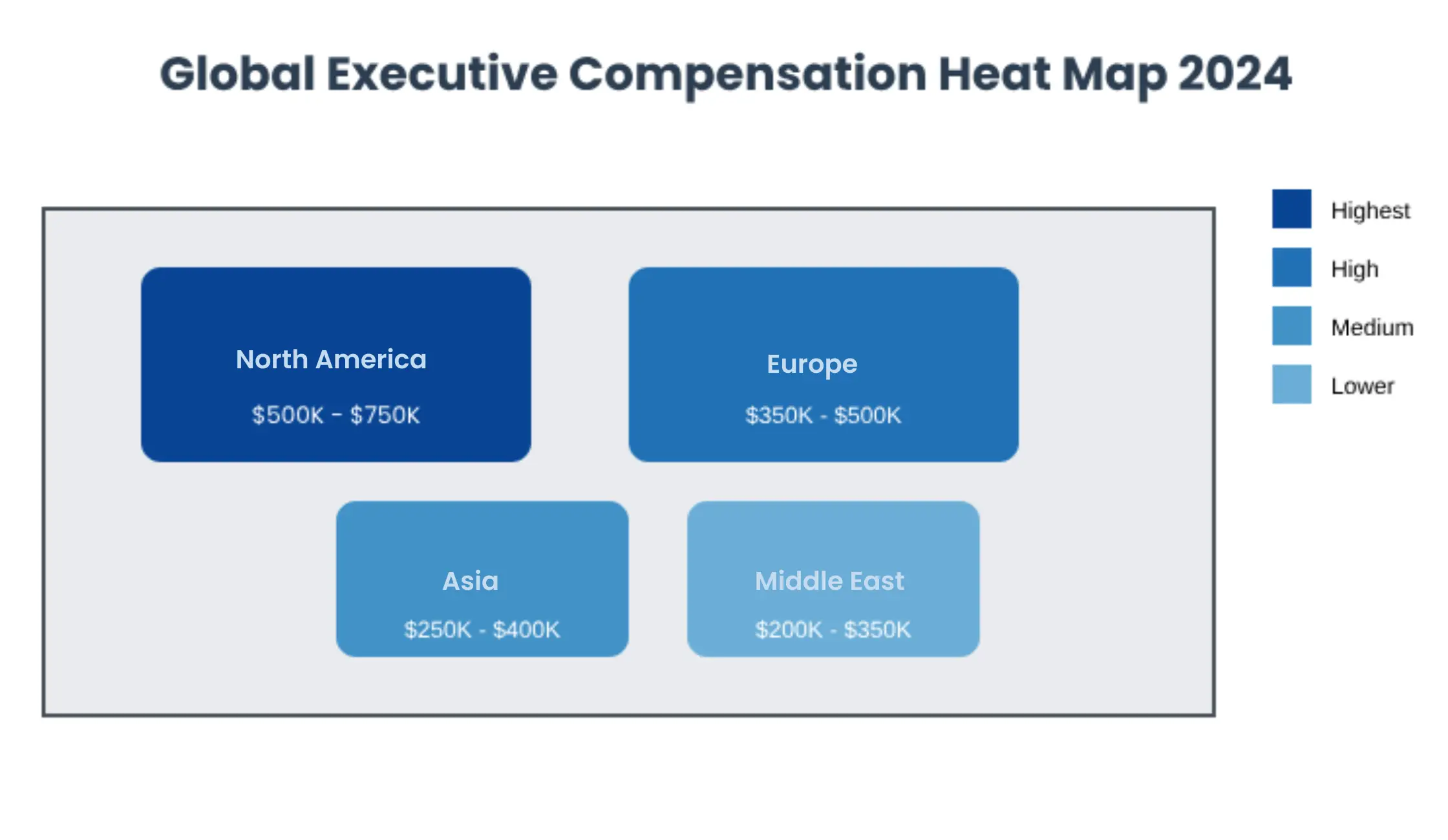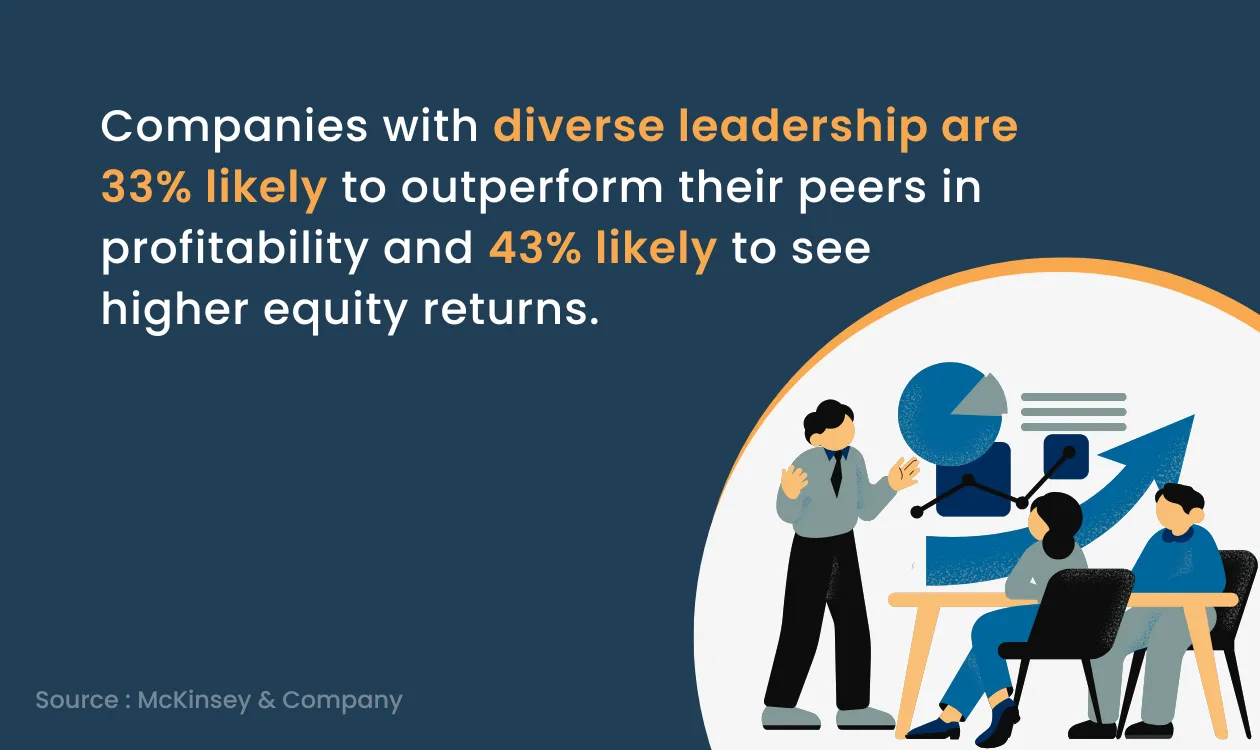Do you ever feel like the guidelines for finding the best leader for your team keep shifting? You're not the only one. The executive search field is changing quickly, and it's important to keep up with these changes.
When searching for a leader, you're not just looking for someone with the right qualifications. You need a leader who understands your company's DNA, shares your values, and can lead innovation and growth.
That's where these executive search industry trends come in.
From the rise of AI-driven executive search tools to the growing focus on diversity, equity, and inclusion, these trends are changing how you find and attract top talent.
But here's the thing: these executive search industry trends in 2025 aren't just about what's popular. They're about understanding what makes a great leader in today's world and finding the best ways to attract and retain them for your team.
So, are you ready to take your executive search skills to the next level? Let's begin!
15 Trends in Executive Search to Enhance C-Suite Hiring
Hiring for the C-suite requires more than just industry expertise - it demands leaders who can adapt, innovate, and inspire. From personalised recruitment approaches to prioritising sustainability and wellbeing, today’s executive search trends are setting new benchmarks for leadership. Let’s dive into the 15 trends that are shaping the future of hiring for top roles.
1. Transparency in Compensation and Negotiation
In today’s landscape of executive search trends, being open about pay and how it’s discussed is very important. Top candidates want to know not just the basic salary but also all the other benefits like bonuses, stock options, and retirement plans. By being clear about these things, companies can build trust with candidates and make the negotiation process smoother, reducing last-minute problems.
Also, there’s a shift toward performance-based incentives. Companies now connect executive compensation to specific goals like increasing revenue or improving ESG (environmental, social, and governance) efforts. Candidates expect these performance measures to be talked about from the start. Being transparent isn’t just a good idea; it’s a key strategy for attracting and keeping the best leaders.
2. The Transition from Role-Based to Skills-Based Hiring
The Transition from Role-Based to Skills-Based Hiring Executive search trends are moving from traditional role-based hiring to a skills-based approach, focusing on specific competencies rather than titles. Instead of just checking if a candidate has held a similar position, you’re asking, “Do they have the skills to drive growth and innovation?” This method allows us to target essential qualities like strategic agility, and digital literacy, which are resilience-particularly valuable in sectors facing rapid change.
By looking beyond roles, you open up a wider talent pool and discover future leaders who might be missed in a search that only looks at titles. This approach isn't just a temporary change; it's a smart way to create flexible leadership teams that can handle tough challenges and succeed in today's fast-changing business world.
| Hiring Approach: Traditional vs. Skills-Based | |
| Traditional Hiring | Skills-Based Hiring |
| Focuses on Degrees & Titles | Competency-Driven Approach |
| Rigid Job Descriptions | Flexible Role Definitions |
| Limited Talent Pool | Diverse Talent Acquisition |
3. Increase in Executive Compensation
Executive pay has been increasing, with businesses offering more comprehensive packages to attract leaders who can drive change and handle complex situations. This isn't just about big salaries - it includes a combination of basic pay, performance bonuses, equity, and long-term rewards that match the company's objectives.
What stands out is the shift toward personalised packages. Companies now tailor compensation to what executives value most, like flexibility, wellness benefits, or relocation support. For headhunters, understanding these executive search trends is essential to securing top talent with the specialised skills that today’s market demands.
4. Focus on Diversity and Inclusive Leadership
Diversity and inclusive leadership have become essential trends in executive search. Companies understand that having a diverse team - with different backgrounds, viewpoints, and experiences - leads to better decisions, more innovation, and a closer connection with customers. It's not just about meeting diversity goals anymore; it's about making a real difference in the business.
As headhunters, you’re not just evaluating technical skills; you're looking for leaders who strongly support diversity, equity, and inclusion (DEI). People with a track record of promoting inclusion and helping underrepresented groups are in high demand. To meet this need, you're expanding your search networks, working with organisations that support diverse leadership, and using DEI-focused assessments.
Ultimately, finding leaders who value diversity and inclusion is a key part of creating strong, forward-looking top-tier executive teams.
5. Digital Transformation and AI Experience
In today’s fast-changing business world, digital transformation and AI expertise are essential for leadership positions. Companies require executives who can promote innovation, handle technological changes, and use data to develop strategies.
As a headhunter, you can use AI-based talent intelligence tools to make the executive search process more efficient. These tools assist with talent mapping, evaluating candidates’ digital skills, and uncovering hidden leadership abilities. They also give insights into candidates’ experience with AI integration, automation, and data analytics - crucial skills for sectors like finance, healthcare, and retail.
These tools ensure a quicker, more accurate match between leaders and organisations, helping businesses stay competitive in a technology-driven world.
6. Positive Hiring Trends Despite Global Economic Challenges
Even with economic difficulties, executive hiring and global executive search trends remain strong as companies recognise the need for resilient leaders to steer them through uncertainty. Businesses are carefully choosing high-level talent with skills in adapting to change, crisis management, and innovation - these are key to staying ahead.
This demand is particularly high in industries facing digital transformation or complex regulations. It’s a "flight to quality" approach, where search firms invest in premium search services to secure leaders who not only bring relevant expertise but also align with values like sustainability and diversity. The current executive search trends show this focus on quality leadership. Even when times are tough, the goal is to hire transformative leaders who can bring about change and stability.
7. Premium, Personalised Executive Recruitment (“White-Glove” Approach)
"Premium, Personalised Executive Recruitment," or the "White-Glove" approach, delivers a tailored, high-touch experience in executive search, focusing on both candidate and client needs. This isn’t about ticking boxes; it’s about building a relationship and aligning a company's strategic goals with an executive’s unique strengths.
In recent trends in executive search, the White-Glove method guarantees complete privacy and ease, taking care of every aspect with great attention to detail. This approach involves talent mapping and market analysis to find top candidates, including those who aren't actively seeking new opportunities. It then provides a personalised experience: flexible scheduling, in-depth briefing on key stakeholders, and industry-based compensation insights.
In essence, White-Glove recruitment means offering a seamless, personalised journey that respects the time, values, and aspirations of both the executive and the hiring company. This personal touch and alignment make it a defining trend in executive search.
8. In-House Executive Search Teams for Confidentiality & Control
Several businesses are expanding their internal executive search teams to improve privacy and keep control over important hiring decisions, following current trends in executive search. For high-level roles, confidentiality is essential; internal teams can conduct searches quietly, safeguarding strategic information that might impact competitive standing.
Control is another advantage. In-house teams, deeply familiar with the company’s culture and goals, can handle every step - from talent mapping to onboarding - with alignment and agility. This setup allows for a “white-glove” approach, ensuring that high-stakes hires are managed with the precision and care that external firms may find difficult to replicate.
9. Enhanced Use of Talent Mapping and Market Intelligence
In executive search, talent mapping and market intelligence are powerful strategies. Talent mapping involves creating a strategic view of potential candidates within the industry, identifying standout leaders and emerging talent - even before they hit the open market. This lets us build a proactive talent pipeline for future leadership needs.
Market intelligence complements this by offering data-driven insights on hiring trends, compensation expectations, and skill demand. Using this information, you can guide clients on where to locate niche expertise and how to position roles competitively. By combining talent mapping and market intelligence, clients can stay ahead, gaining access to top leadership talent precisely when they require it.
10. Demand for Specialised Industry Knowledge and Expertise
Companies seek leaders with specialised industry knowledge, not just general skills. They want executives who understand the unique challenges, regulations, and advancements in their field - whether it's a tech leader knowledgeable in AI and cybersecurity or a healthcare executive with regulatory expertise.
This trend means that as headhunters, we’re focused on targeted talent mapping, niche databases, and sector-specific networks to find candidates with the depth and insight to tackle industry-specific challenges from day one. It's not just about finding qualified leaders anymore; it's about selecting those who can provide immediate, practical value that matches the company's strategic goals.
11. Prioritising Upskilling & Talent Development to Retain Leaders
Prioritising upskilling and talent development to retain leaders has become a key strategy in executive search. Organisations now realise that fostering continuous growth is essential to keep high-calibre leaders engaged and effective. Upskilling prepares executives not just to fill current skill gaps but to handle future challenges, from digital transformation to shifting global demands.
Investing in talent development demonstrates a commitment to leaders’ career growth, which can be a strong retention tool. When leaders see chances to grow within their company, they are less likely to look for jobs elsewhere. This often involves executive coaching, leadership training, and personalised mentoring.
Headhunters now look for leaders who pursue learning and demonstrate adaptability. Candidates with a history of growth are valued as resilient and future-ready, making upskilling vital for both attracting and retaining top talent.
12. Insights from Data-Driven Talent Intelligence Reports
A new trend around Data-driven talent intelligence reports is a game-changer. They provide a roadmap, highlighting where top talent is, what skills are needed, and where there are shortages in the industry.
These reports go deeper than just resumes, giving information about leadership style, how well someone can adapt, and how they fit into a company's culture - qualities that are crucial at the executive level but often overlooked. By using this intelligence, you can bring clients a data-backed perspective, not just a shortlist, enabling strategic, long-term hiring decisions.
In today's rapidly changing world, talent intelligence is crucial for improving our hiring methods and making sure the leaders we choose can truly lead change.
13. Preference for Hiring Creative & Resourceful Executives
In today's competitive market, companies prioritise hiring executives who bring creativity and resourcefulness to leadership. These qualities are now necessary, not just “nice-to-haves.” Creative leaders don't just follow the usual methods; they come up with new ideas when traditional approaches don't work. Resourceful leaders can adapt in tough situations, using limited resources effectively and seeing opportunities where others see problems.
As headhunters, you evaluate candidates based on their ability to adapt, solve problems, and encourage innovation within their teams. Executives with these skills don’t just manage - they push for growth and change, which makes them very important in today’s complicated business world.
14. Rising Importance of Wellbeing Programs for Executives
In today’s demanding world, the well-being of executives is crucial. With more people experiencing burnout, companies are now offering strong well-being programs for their leaders, focusing on mental health, work-life balance, and stress management.
This shift is also reflected in recent executive search trends, where candidates are now looking at more than just pay when considering job offers. They are also considering how much support the company provides for sustainable performance. As you may have noticed, companies with strong programs focused on employee well-being tend to attract and keep the best talent, indicating that they value balanced and resilient leaders. These programs also improve decision-making and productivity, fostering a healthier and more positive work environment from the top down.
15. Emphasis on Sustainability & Corporate Social Responsibility (CSR)
In today’s executive landscape, there’s a big emphasis on Sustainability and Corporate Social Responsibility (CSR). Companies want leaders who can make money while also supporting sustainable practices and ethical behaviour. Executives need to mix business goals with caring for the environment and helping communities, making CSR a major factor that sets them apart.
For executive search, this shift means checking how committed candidates are to ESG (Environmental, Social, and Governance) issues and what they’ve done in the past to promote sustainability. Especially in fields like energy and manufacturing, having a “triple bottom line” mindset—caring about people, the planet, and profits—shows a modern, values-based approach that attracts stakeholders, customers, and employees.
Key Takeaways for Future Leadership Trends
Wrapping up, it's clear that the field of executive search is changing quickly. The executive search trends you've seen aren't just changing the way things are done; they're also changing what it means to be a leader in today's world. The future of work is already here, and it needs leaders who can adapt, show empathy, and use technology well.
The journey ahead is exciting and filled with opportunities for growth and innovation. But it also means we must question old ways of thinking and accept new ideas. Whether it's using AI to reduce unfairness or focusing on emotional intelligence, every trend is leading us toward a more inclusive and people-focused future.
Looking ahead, let's promise to challenge limits and support a new group of leaders who can handle unpredictability with bravery and strength. In the end, strong leadership isn't only about achieving success; it's about motivating others and making a meaningful difference.
So, let's not just follow these executive search trends; let's be the ones driving them. That's how we'll create a future where every organisation flourishes under outstanding leadership.
Discover executive recruitment excellence with our Full Spectrum Guide to Executive Search.












